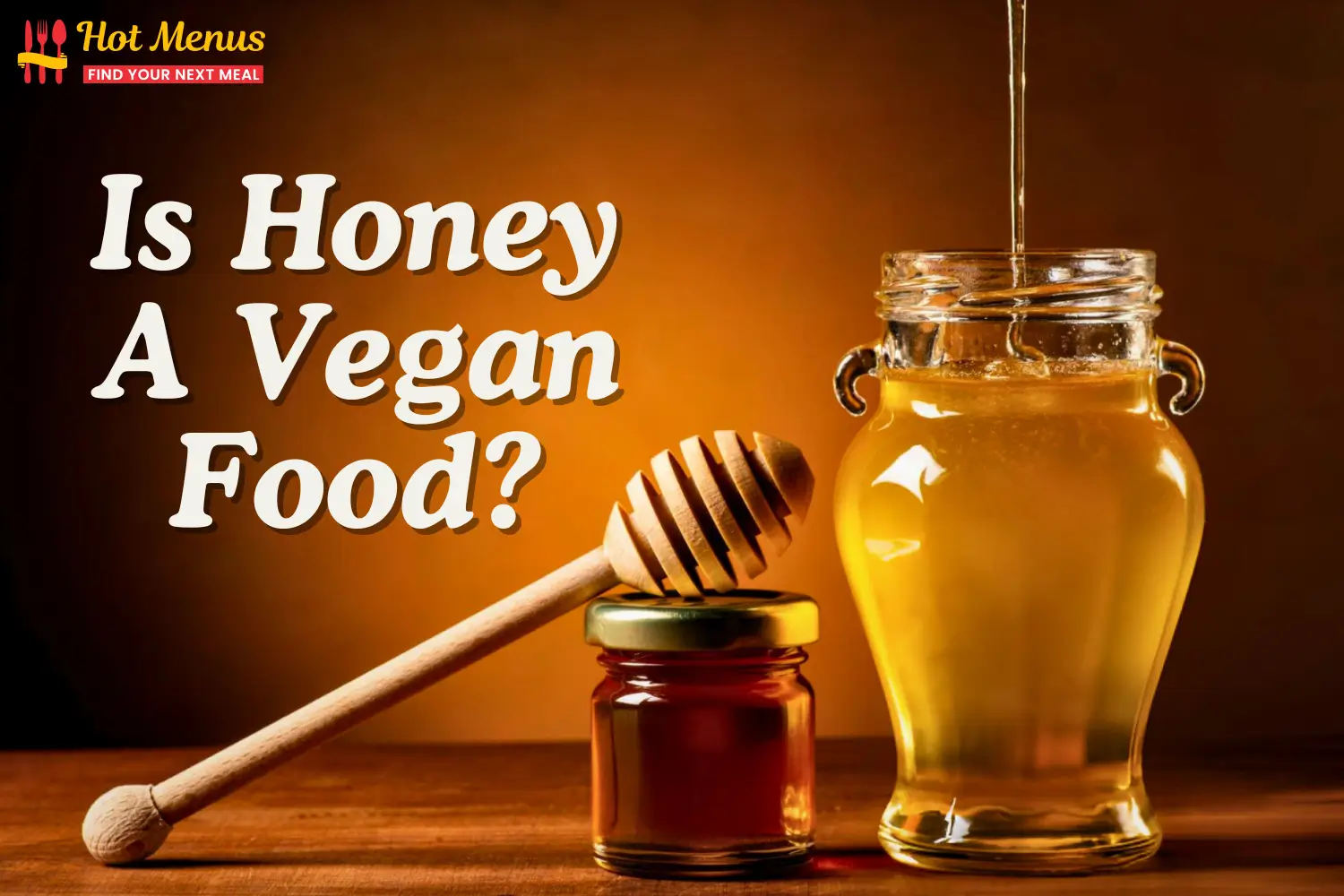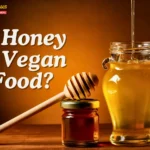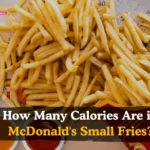Is Honey a Vegan Food?” Honey isn’t vegan because it’s made by bees, and vegans avoid animal products. Bees produce honey for themselves, not for humans. While honey is often used for sweetness, it’s still an animal product.
Veganism aims to reduce animal cruelty, so vegans avoid honey, along with meat, dairy, and eggs. Despite its sweetness, honey isn’t vegan because it’s produced by bees.
In this article, we’ll explain “Is Honey a Vegan Food?”, how it’s made, the ethical concerns, and offer plant-based alternatives like agave, maple syrup, and date syrup.
Defining Veganism
Veganism is a philosophy and way of life that seeks to exclude, as far as possible and practicable, all forms of animal exploitation and cruelty for food, clothing, or any other purpose. It was formalized in 1944 by The Vegan Society, and as of 2023, there are over 79 million vegans worldwide, according to a GlobalData study.
Core Principles
The Vegan Society defines veganism’s core principles. Avoid using animals for food, clothing, or entertainment. Choose non-leather items and cruelty-free cosmetics.
These principles further develop the ethical basis of veganism through the following key aspects:
- Ethical avoidance of animal use: Choose cruelty-free options. Support PETA against factory farming. Pick synthetic fabrics like Stella McCartney’s over wool or fur.
- Promotion of alternatives to animal-based products: Support non-animal products to reduce harm. 2022 Oxford research shows plant-based diets prevent 90% of animal suffering. Use oat milk from Oatly.
- Environmental stewardship: Tackle animal farming’s climate impact. UN FAO data: livestock causes 14.5% of global emissions. Buy zero-waste, cruelty-free products from The Body Shop to lower your carbon footprint.
Dietary Guidelines
Vegan dietary guidelines recommend focusing on whole foods such as fruits, vegetables, whole grains, legumes, and nuts while excluding all animal products, including meat, fish, poultry, dairy, and honey.
The Academy of Nutrition and Dietetics emphasizes that appropriately planned vegan diets are healthy, nutritionally adequate, and may provide health benefits for the prevention and treatment of certain diseases. These diets are appropriate for all stages of life, including pregnancy, lactation, infancy, childhood, adolescence, and for athletes.
Balance your meals. Aim for 45-65% calories from carbs, 20-35% from fats, and 10-35% from proteins. Follow USDA advice.
- Get vitamin B12 from supplements. Take 250 mcg of cyanocobalamin daily to avoid deficiency.
- Omega-3 fatty acids can be obtained from sources like 2 tablespoons of ground flaxseeds per day, providing about 4.6 grams of ALA (alpha-linolenic acid).
- Protein can be sourced from foods like 1 cup of cooked lentils, which provides 18 grams of protein.
- Iron can be obtained from spinach, paired with a source of vitamin C for better absorption.
- Calcium can be obtained via 1 cup of fortified almond milk, providing 300 mg of calcium.
The Academy of Nutrition and Dietetics’ 2021 position paper provides similar recommendations.
A sample daily menu for a 2,000-calorie vegan diet includes:
- breakfast of oatmeal with berries and flax (400 calories);
- lunch of lentil soup salad (500 calories);
- dinner of tofu stir-fry (600 calories);
- and snacks of nuts and fruit (500 calories).
What is Honey?
Honey is a natural sweetener produced by honeybees from flower nectar. According to a 2018 USDA nutritional analysis, it is primarily composed of fructose (38%) and glucose (31%), along with small amounts of vitamins, minerals, and antioxidants.
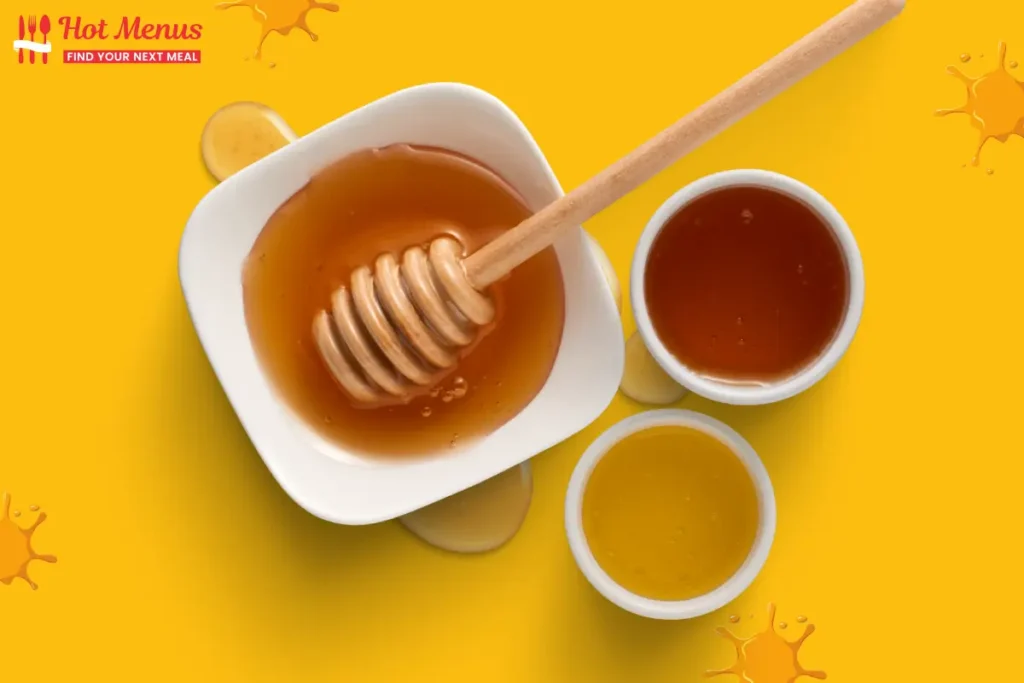
Composition and Origin
Honey has about 80% sugars like fructose and glucose. It includes 17% water. Enzymes like glucose oxidase give it antibacterial power.
The nectar used to produce honey originates from over 20,000 plant species worldwide, according to a 2020 study published in the Journal of Agricultural and Food Chemistry. The NIH database provides a more detailed breakdown of its composition, indicating 38-40% fructose and 30-35% glucose, which offer rapid energy. Enzymes like invertase in honey aid digestion.
Honey contains 0.5-3% pollen by volume. This amount varies by source.
Raw honey also has helpful compounds like flavonoids. They appear at 100-200 mg/kg.
Bees collect nectar from different plants. This creates varied honey types.
Monofloral honey comes from one plant source. For example, Manuka honey from the Leptospermum scoparium plant has high methylglyoxal levels. This compound fights bacteria.
Polyfloral honey uses nectar from many wildflowers.
Buy honey from local apiaries. This keeps it fresh and protects helpful enzymes from heat.
Nutritional Profile of Honey
Honey is primarily composed of sugars, with minimal protein or fat. The following table outlines its nutritional profile based on the USDA’s Standard Reference Legacy Release database (per 21g serving, approximately 1 tablespoon):
| Nutrient | Amount |
|---|---|
| Calories | 64 |
| Carbohydrates | 17g (mostly sugars) |
| Protein/Fat | 0g |
Honey Production Process
- Honey production begins with bees collecting nectar from flowers.
- Bees add enzymes to nectar. They regurgitate it to break down sugars into simpler forms.
- The honey is stored in honeycomb cells, where the water content naturally decreases.
- At this stage, bees fan the honey with their wings to further evaporate the moisture.
According to the FAO, approximately 1.9 million tons of honey are produced globally each year as of 2022.
Bee Foraging and Nectar
Worker bees travel up to 5 kilometres from the hive to gather nectar.
They store it in a special stomach called the honey stomach.
Enzymes like invertase turn sucrose into glucose and fructose.
Studies from the University of Guelph show bees regurgitate the nectar 5 to 10 times per load.
- First, during the foraging flight, a bee visits an average of 500 flowers per trip and uses its long, tube-like proboscis to draw nectar into the honey stomach.
- Next, enzymes like invertase and glucose oxidase start working right away. They lower the pH to 3.9-4.5. This stops bacteria and germs from growing.
- Third, back at the hive, the bees regurgitate the nectar into cells and fan it with their wings to evaporate the water content from around 80% to 18%, thereby producing honey.
A 2019 Apidologie study shows one worker bee makes just 1/12 teaspoon of honey in her life.
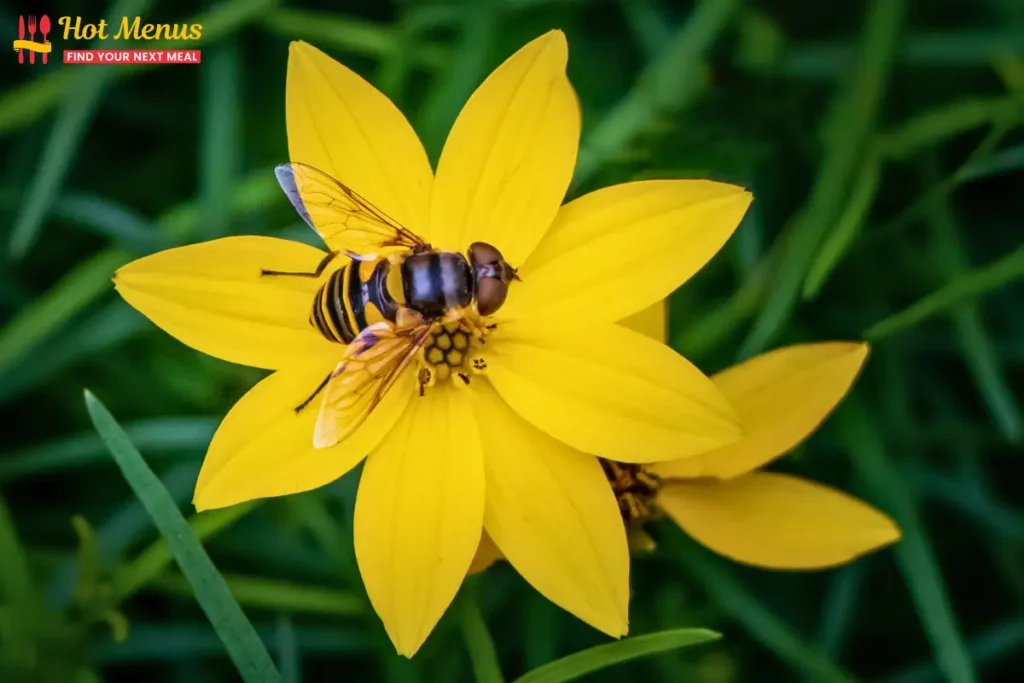
Human Harvesting Methods
Human harvesting methods for honey range from traditional crush-and-strain techniques in small apiaries to centrifugal extraction in commercial operations. According to the American Beekeeping Federation’s 2023 statistics, U.S. beekeepers typically harvest about 150 pounds of honey per hive annually.
To achieve sustainable yields, consider these four methods, all of which comply with USDA organic standards that prohibit chemical treatments:
- Crush-and-strain: This low-tech approach is suitable for 10-20 hives; it involves crushing uncapped combs and straining the honey through cheesecloth. Pros include minimal equipment needs (a $20 setup) and preservation of natural wax. Cons are that it is labour-intensive and destroys the comb.
- Centrifugal extractor: Ideal for operations with 100+ hives, this method uses a $200-500 machine to spin frames and extract honey. Pros include efficiency, extracting up to 90% of the honey while allowing comb reuse. Cons are the higher upfront cost and the need for electricity.
- Flow Hive: This bee-friendly kit, priced at $500, allows bees to fill removable frames without the hive being opened. Pros include reducing disturbance by 50% and enabling easy tap extraction. Cons are that it is limited to specific frame sizes.
- Cut-comb harvesting: This technique involves slicing and packaging full comb sections. Pros include producing a premium product with no additional processing required. Cons are lower yields of liquid honey and its seasonal limitation.
Burt’s Bees apiaries exemplify sustainability by using extractors to harvest honey ethically, minimizing hive stress and boosting long-term productivity.
Honey’s Ethical Issues
Honey consumption raises ethical issues about bee health and the environment. Groups like PETA say commercial beekeeping harms over 100 billion bees each year. This comes from 2021 estimates by the World Organisation for Animal Health.
Exploitation of Bees
Beekeepers clip queen bees’ wings to stop them from leaving. They also move hives long distances. These actions stress worker bees. A 2019 study in the Journal of Apicultural Research shows they cause 30-50% bee deaths each year. This worsens the bee death crisis.
Beekeepers take too much honey. This leaves bees without enough food. The RSPCA suggests leaving 20-30 kg of honey in the hive. Bees need it for winter and lean times.
Pesticides harm bees. Neonicotinoids confuse them and weaken their defences. The EU banned them in 2018. A 2020 EFSA report explains this.
Forced breeding of queen bees lowers their gene variety. This makes them more prone to illnesses. A 2021 Apidologie study confirms this.
Clipping queen bees’ wings hurts them. Beekeepers do this without pain relief.
PETA reports reveal cruelty in honey farming. Ethical veganism provides better options. Look for the True Honey badge. It ensures kinder bee treatment. PETA’s 2020 #BoycottHoney campaign highlighted problems. It pushed vegan choices that protect bees.
Environmental Impact
Bees pollinate 35% of the world’s food crops. But heavy beekeeping destroys habitats. It also spreads diseases. A 2023 IUCN report says commercial bee farms boost Varroa mite spread by 20-30%. These mites harm bees.
Migrating bees help 80% of California’s almond trees. They increase crop yields by 30%, per USDA data. Yet, large single-crop farms stress bees. A 2021 Nature study says this cuts plant variety by up to 50%.
Moving hives over 1,000 miles each year adds pollution. Each hive creates about 500 kg of CO2, on average.
To mitigate these impacts, sustainable beekeeping practices should be adopted, such as
- Plant 10-15 local plants near bee farms to help bees stay strong.
- Move hives to new spots in different seasons.
- Buy only Fair Trade USA-certified honey. It protects nature, treats workers fairly, and supports local areas.
Vegan Perspectives on Honey
Vegans disagree about honey. The Vegan Society has called it non-vegan since 1957. They see it as an animal product.
A 2022 Vegan Society poll showed 15% of vegans sometimes eat honey. This shows the debate continues.
Arguments Against
Vegans oppose honey due to bee exploitation. Key reasons include:
- Honey production raises ethical concerns. It involves animal exploitation and forced labour. Bees must collect and process nectar. It goes against the Vegan Society’s rules. Veganism rejects all animal exploitation for food.
- The second argument highlights potential health risks from adulteration. A 2013 investigation by Food Safety News revealed that 40% of store-bought honey was diluted with corn syrup. Adulterated honey may contain antibiotic residues absent in natural honey and often has reduced nutritional value compared to its pure form.
- The third argument addresses an ethical inconsistency. Vegans oppose exploiting cows for dairy, which also leads to their use for meat. Yet some accept honey harvesting. Honey is essentially bees’ “milk” extracted in a more invasive way.
- The fourth argument views honey as the theft of labour from sentient beings. In his 2010 book The Animal Rights Debate, Gary Francione states, “Bees are sentient beings whose labour we steal.” This perspective is echoed in a 2023 Reddit thread on r/vegan, which garnered over 5,000 upvotes and described honey as “bee vomit” while urging a boycott for compassionate reasons.
Arguments For
Supporters say local honey helps bees. Ethical sourcing aids conservation and pollination. It causes no direct harm. A 2021 study in Sustainability backs this. Small-scale bee farms boost wild bee numbers by 25%.
Beyond conservation benefits, local honey reduces transport emissions by an average of 90%, according to the Carbon Trust. This promotes overall sustainability by lowering carbon footprints, making local honey an excellent choice for eco-conscious consumers who can source it ethically from nearby apiaries.
Ethical beekeeping reduces exploitation. Scottish harvesters rarely clip the queen’s wings. This lets bees swarm naturally. Expert Peter D’Amato shared this with One Green Planet.
Experts agree that honey is nutritionally superior to other sugars. A 2022 study published in Nutrition Reviews revealed that honey contains up to four times higher antioxidant levels than agave syrup, along with elevated amounts of vitamins, minerals, and antimicrobial, antiviral, and antifungal compounds that provide enhanced health benefits for users.
Critics note that hive disturbances harm the surroundings. But Quora discussions say honeybees help biodiversity. They may affect some native species. Still, overall benefits win out.
FAQs
Is honey a vegan food?
Honey is not considered a vegan food because it is produced by bees, which are animals. Vegans avoid all animal-derived products, and honey involves the exploitation of bees in its production.
Why is honey not classified as a vegan food?
Honey is not vegan. Vegan groups agree. It comes from beehives as an animal product. This clashes with avoiding animal exploitation.
Is there any honey that is vegan?
Vegan honey is a plant-based alternative made from ingredients like coconut nectar or dandelion syrup, offering a honey-like sweetness without using bees. Agave nectar, maple syrup, and date syrup are popular vegan substitutes for traditional honey.
Can a vegan eat honey?
Honey is not vegan because it is made by bees, an animal byproduct. Vegans avoid honey and opt for plant-based alternatives like agave nectar or maple syrup.
Is honey veg or non-veg?
Honey is considered non-veg by some because it’s made by bees, but others see it as vegetarian since it doesn’t involve killing animals.
Conclusion
In conclusion, the question “Is honey a vegan food?” depends on personal beliefs. Honey is produced by bees, so many vegans avoid it due to concerns about animal exploitation. Instead, they choose plant-based alternatives like agave nectar or maple syrup. However, some people may choose to consume honey based on ethical considerations or personal values. Ultimately, the decision is up to each individual.
For More Info About UK Food Menus Must Visit Hot Menus
